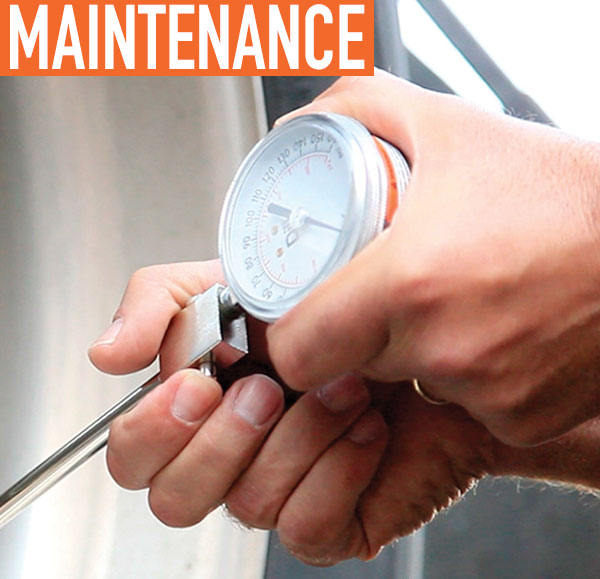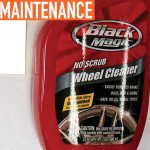Understanding and choosing tires with outstanding technology and fitting them to the fleet’s needs won’t amount to much if the tires aren’t also properly maintained. Every fleet should have a formal tire maintenance program and policy to make sure its tires are properly cared for, so they provide the most service to the fleet and make the most of the technology with which they were designed. An effective tire maintenance policy should stipulate and record several measurements:
- Established pressure data
- Loads carried by vehicles
- Frequency of tire inspections
- Removal timelines for retreads, as well as the number of retreads expected
- Expected life of the tire casing within the fleet
- Inspection of failed or end-of-life tires (scrap analysis)
In order to establish a baseline, fleet managers should begin collecting tire data over a year. Then fleets may find that there are certain changes that can be made for greater efficiency or better cost savings. This will be the first step toward a written policy related to their tire business and retreading.

Featured Image: Drivers should check the condition of the tires in all positions during the
pre- and post-trip inspections.
Above: An effective tire maintenance policy should stipulate and record several measurements.
TRAINING
Training for those who handle tires is crucial. An untrained person can destroy good equipment without the proper training. In fact, OSHA supports this view by requiring anyone that touches a tire to have basic training. Several sources offer formal tire handling training, including tire manufacturers—like Michelin—and the Tire Industry Association (TIA).
Training should also be provided to drivers. Drivers should check air pressure and the condition of the tires in all positions during the pre- and post-trip inspections. If repairs are needed, they should be handled immediately to avoid problems. If the tread has reached the specified retread pull point or DOT minimum tread depth, the tire should be pulled. This is required by the CSA program.

In order to establish a tire’s baseline, fleet managers should begin collecting tire data over a year.
ESTABLISHING A PROGRAM
There are two approaches to establishing a tire maintenance program. Some fleets prefer to do it all in-house, while other fleets choose to outsource all or part of the program. Regardless of the option chosen by the fleet, it is a good idea to work with a dealer that is close to assist the fleet in emergency situations and is willing to work with the fleet in reducing overall tire cost.
At its most basic level, Michelin recommends a “Top 10” list of tire maintenance practices:
- Check tires for correct pressures: Every shop should have a master air gauge and every driver should have an accurate pressure gauge and be instructed to check the tires on their truck every day during the pre-trip inspection.
- Drivers should conduct a visual inspection of their vehicle’s tires prior to operating the vehicle: The drivers should look for signs of irregular wear in the tread or shoulder areas of their tires and examine the tires for bubbles or bumps, which may be caused by air infiltration or foreign objects. (Pre- and post-trip inspections)
- Check the vehicle’s owner’s manual: Refer to the owner’s manual or the vehicle load and tire information placard to determine precise pressures for the loads that the vehicle is designed to carry.
- Check tires for correct pressures: A tire that is 20 percent below the optimal air pressure is considered a flat tire. A tire that is run under these conditions will experience casing fatigue that could lead to a catastrophic failure or a zipper rupture. If the tire has been run 20 percent underinflated, it should be removed from the vehicle and scrapped. Under CSA guidelines, a tire that is found to be operating with less than 50 percent of the maximum pressure (sidewall) is out of service condition.
- Never weld or apply heat to the wheel when the tire is mounted on it: This can cause serious damage to the tire and can cause the tire to explode, causing personal injury.
- Store tires properly when they are not in use: Place them in a cool, dry place away from direct sunlight to avoid premature aging. Tires should be stored standing up on their tread, not stacked in a pile on their sidewalls.
- Check tires for correct pressures: A tire that is run 10 percent underinflated will lose 10 percent in tread wear and will come out of service quicker.
- Beware mixing tires on your vehicle, especially across an axle: Try to match tires with the same tread depths, same tread patterns, and same height (or diameter).
- Check tires for correct pressures: Depending on how much your tires cost, you may be losing between $15 and $30 a tire due to underinflation (10 percent or more underinflated).
- Keep your tires clean: Wash them with warm soap and water. This will help prevent premature aging and deterioration of the rubber.
As the “Top 10” list emphasizes through repetition, tire pressure maintenance is highly important and should be the focal point of any tire maintenance program. Underinflation (increased flexing causing heat buildup) or overinflation (vulnerable to impact breaks and punctures) are both detrimental in obtaining optimum service life of your tires.
So while the economy continues to struggle, creating a difficult environment to stay profitable and competitive, tires present an area for savings. Understanding the technology that goes into your tires and then putting a maintenance plan in place to protect those tires will help a fleet save money on its tire costs—money that will go straight to the bottom line.
FOR MORE INFORMATION:
Ralston Moore is the customer engineering support manager for Michelin Americas Truck Tires. Find out more about Michelin tires and other Michelin products and services, visit www.michelinman.com.
_______________________________________________________________________
MODERN WORKTRUCK SOLUTIONS: JUNE 2016 ISSUE
Did you enjoy this article?
Subscribe to the FREE Digital Edition of Modern WorkTruck Solutions magazine.
![]()




